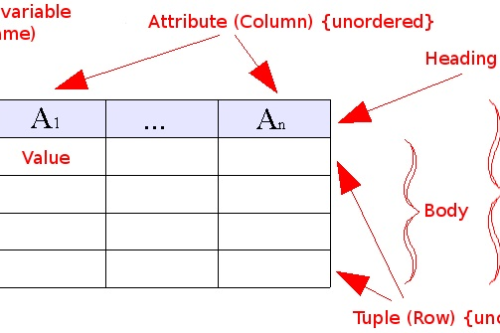Industry research suggests that only 1 in 10 organizations view their data to be reliable. Data-related problems result in an average loss of roughly $5 million annually. In fact, it is estimated that about 20% of these companies experience losses in excess of $20 million annually. That’s because most businesses validate far less than 10% of their data, which means at least 90% of their data is untested. As bad data is possibly present in all databases, enhancing testing coverage is essential.
What is Data Validation Testing?
Data validation testing is a process that allows you to check whether the given data is correct and complete. It helps verify whether the value of a data item comes from the given (finite or infinite) set of acceptable values. For instance, a geographic code (field), such as a US State, may be checked against a table of acceptable values for the field.
When it comes to data validation in Excel, you can restrict the type of data or the values that users enter into a cell, such as by creating a drop-down list. Likewise, for data integration in Google Sheets, you can follow the similar technique. You can also create a data validation formula in Excel. However, manually validating data can be time-consuming and susceptible to human errors.

Automated data validation testing with ETL Software. Source: Astera
Issues with Data Validation Testing
Data is usually extracted from various sources, including Excel spreadsheets, CSV and XML files, as well as flat files and columns and rows from several database vendors’ software. So, source data is likely to have the following data validation and verification restrictions:
- Missing values – Data may have null or blank values. Often excel, VBA, sharepoint, and even XML file validation testing issues can occur.
- Duplicates – Some of the data entries may be replicated as data is collected from multiple channels in several stages. Duplicates can be removed by data replication validation.
- Format Issue – Data from multiple sources may have different formats.
- Misspelling – Data may have incorrect spellings.
- Cluttered Data – Cluttered data can make it difficult for people to search for their required records.
- Dependent values – The value of a field may depend on another field. For example, product data depends on the info related to suppliers. So, errors in supplier data will reflect in product data as well.
- Invalid data – If the data has known values, like ‘M’ for male and ‘F’ for female, then changing these values can make data invalid.
Data Validation Techniques to Improve Processes
Here are the top 6 analytical data validation and verification techniques to improve your business processes.
1. Source system loop-back verification
Carry out aggregate-based verification of your subject area and make sure it matches the data source. It ensures that data validation in excel sheets, VBA sheets, or any other type of data source has the proper data available.
2. Ongoing source-to-source verification
You can have an approximate verification across multiple source systems or compare similar information at different stages of your business life cycle. This can be performed using code, such as SQL data validation – to compare two data sources by joining the data together and looking for differences.
Data validation tools like Astera Centerprise Data Integrator make this process a lot easier and take out the hassle of repetitive coding. They offer code-free templates that users can easily integrate in their workflows
3. Data-Issue tracking
You can track all of your issues such as redundancy, incorrect data, duplication, incomplete info etc in one place via an automated data tracking tool to find recurring issues, reveal riskier subject areas, and help ensure proper preventive measures have been applied.
4. Data certification
You can use data profiling tools to perform up-front data validation before you add it to your data warehouse. It can increase time to integrate new data sources into your data warehouse, but the long-term benefits greatly improve the value of the data warehouse and trust in your information.

Example of ETL data validation in EDQ (Source: ClearPeaks)
5. Statistics collection
You can maintain statistics for the full life cycle of your data to create alarms for unexpected results. You can have an in-house statistics collection process or rely upon metadata captured with your transformation program to ensure you can set alarms based upon trending. For example, if your loads are usually a particular size and suddenly the volume reduces in half, this should trigger an alert.
6. Workflow management
Think about data quality while you design your data integration flows and overall workflows to catch issues quickly and efficiently. For example, you can use a workflow automation tool to build strong stop and restart processes into your workflow so that any issue in the loading process can trigger a restart.

Source: Integrify
Benefits of Data Validation in ETL
Wondering why you should validate your data? These are a few benefits data validation testing has in store for you:
Data quality compliance
ETL validation testing helps you ensure that the data collected from different sources meets your data quality requirements. You can identify quality issues and determine actionable steps to improve data quality.
For example, if you have a legacy system, a cobol data validation software can ensure that all data being ported in to the data warehouse is accurate and quality, in short it should follow all data standards.
Enhanced data governance
There are different types of validation in ETL testing and the purpose of all of them is to ensure that the data collected is accurate, complete, and healthy. By placing validation filters at strategic places from the data acquisition point to its delivery into the data warehouse, you can flag any inconsistencies or otherwise unexpected data values.
Faster decision making
You can make better decisions faster, and instead of spending hours trying to find golden nuggets, you can use your reliable data to quickly find business opportunities.
Improved data forecasts
Businesses can use validated data for demand planning and business forecasting. For instance, you can improve the forecasting accuracy by building and validating demand prediction models.
Automate Data Validation Testing with Astera
Astera Centerprise is a powerful analytical data validation tool that supports validation and verification via built-in data profiling, quality, and cleanse transformations. Using its out-of-the-box connectors in a graphical UI, you can integrate, transform, and validate data from 40+ sources.
You can easily automate data validation and verification tasks, freeing your employees from the repetitive and manual effort of identifying and fixing incorrect records, and standardizing data to make it useful by using this or any other data validation tool available in the market.
Wrap Up
In the modern data-driven enterprise world, automating validation testing can considerably save time and streamline your business operations. Using a data validation tool allows you to validate data as a part of your workflow. Plus, data updates can be made conditional, based on the success of validation tests to guarantee the reliability of your business information.







